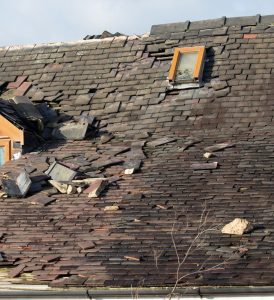When you discover a hole in your roof, it’s not just a breach in your home’s defence against the weather; it’s a call to action. The integrity of your roof is paramount for maintaining the safety and energy efficiency of your home. However, the crucial question remains: can the hole simply be patched, or is a complete roof replacement necessary? The answer hinges on various factors including the size of the damage, the age of the roof, the type of roofing material, and the underlying cause of the hole.
Assessing the Damage
Size and Extent
The size of the hole is a primary determinant. Small punctures caused by fallen branches or wayward wildlife can often be patched quite effectively. Localised repairs in these instances are not only feasible but cost-effective. Patching involves cleaning the affected area, applying a patch of similar roofing material, and sealing it to prevent leaks.
Conversely, large holes—or multiple small ones that indicate a pattern of damage—may signal deeper structural problems. In such cases, patching might only serve as a temporary fix. If the damage affects several areas or involves critical structural components of the roof, such as the rafters or decking, more extensive repairs or a complete replacement could be necessary.
Age of the Roof
The age of your roof plays a crucial role in deciding between patching and replacing. Most roofs have a lifespan depending on the material used:
- Asphalt shingles: 15-30 years
- Tile: 50-100 years
- Metal: 40-70 years
- Flat roofs: 10-20 years
If your roof is near the end of its expected lifespan, ongoing repairs might prove more expensive in the long run compared to replacing it. An old roof prone to leaks and insulation problems does not just lead to higher maintenance costs but can also impact your energy bills adversely.
Roofing Material
Different materials require different approaches to repair. For instance, asphalt shingles and tiles are generally easier to replace in sections, making patching a viable option. Metal roofs, while durable, can be more challenging to patch seamlessly due to oxidation and colour matching issues.
Moreover, the availability of the original material can affect the decision. If the roofing material is obsolete or hard to source, finding a perfect match might be difficult, pushing the preference towards replacement, particularly from an aesthetic viewpoint.
Underlying Cause
Understanding why the hole appeared is essential. If it’s due to an isolated incident, such as storm damage, a repair might suffice. However, if the cause is systemic, like widespread rotting of the wooden supports due to poor ventilation, then patching the visible damage won’t address the root problem. A thorough inspection by a professional can reveal whether the damage is symptomatic of a larger issue.
Patching vs. Replacement: Cost Considerations
Cost is often the decisive factor. Patching is undoubtedly less expensive in the short term. A typical repair might cost anywhere from £100 to £1,000, depending on the complexity and the materials required. In contrast, replacing a roof can run from £5,000 to over £10,000.
However, the long-term costs should also be considered. A new roof offers the opportunity to improve your home’s insulation, install solar panels, or upgrade to more durable, maintenance-free materials. Additionally, it can significantly enhance your property’s resale value and curb appeal.
Professional Assessment
Regardless of how confident you feel about the condition of your roof, a professional assessment is extremely important. Roofing experts can provide detailed insights into the extent of the damage, the integrity of the structure, and the most cost-effective options. Regular inspections can also pre-empt severe damage, extending the lifespan of your current roof or ensuring timely replacement.
Conclusion
Deciding whether to patch a hole in your roof or replace it entirely is not just a matter of assessing the damage but also considering future implications. While patching may be adequate for minor damage, significant issues often require more radical solutions. Engaging with roofing professionals and considering both immediate costs and long-term benefits will guide you to the best decision for your home’s needs and your financial circumstances.




